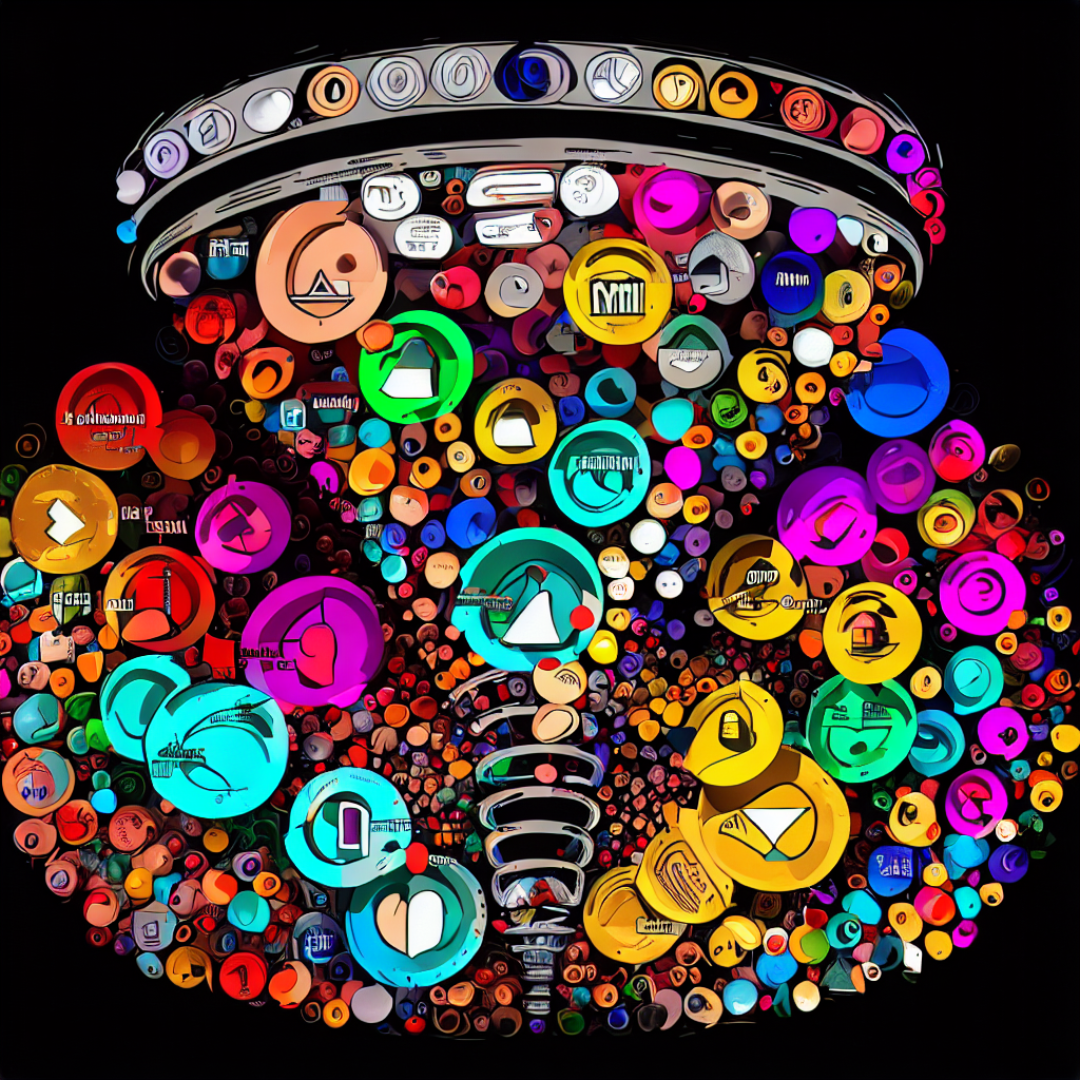The internet has fundamentally changed how people shop and buy goods. It has also dramatically changed the way businesses market and sell. Businesses, now, can contact and engage more customers, more frequently. This has been a result of the emergence of multichannel marketing and the growth of online purchasing. The phenomena has become even more significant since the worldwide pandemic.
Today’s marketers have the capacity to collect campaign data and monitor results in real time. While attribution was previously impossible, data transparency today allows marketers to improve the performance of their campaigns. This phenomenon is known as “performance marketing” in terms of marketing.
Performance marketing has become a key part of brand strategy. Companies can achieve long-term results by focusing on both short-term sales goals (such as increasing revenue) and long-term growth (such as building brand recognition).
If you are looking to implement performance marketing into your strategy, read this article to help you get started.

What is Performance Marketing?
Performance marketing involves using data and analytics to connect with consumers based on their behavior. It can be carried out through email, mobile, social media, or other digital channels. Additionally, known as attribution marketing, it focuses on enhancing customer engagement, conversion rates, and overall satisfaction with the brand.
It is also known as audience-led marketing, since, it measures how digital marketing campaigns are impacting specific audiences.
It is one of the many digital marketing strategies that are being used by marketers to create effective campaigns. Digital Marketing includes marketing through digital channels like email, search engines, social media, and mobile apps. In contrast, Performance marketing focuses on how well online advertising works. Digital marketing tools create content to reach your audience. On the other hand, performance marketing involves developing a specific plan. This plan aims to achieve measurable goals, such as increasing sales, improving customer satisfaction, and driving revenue growth.

Benefits of Performance Marketing
Without a doubt, Performance marketing is a powerful tool that can help you get more leads and sales. It is also a sustainable way to increase your brand awareness and improve customer loyalty.
1. Get better conversions
Most importantly, Performance marketing helps identify what works and what doesn’t for your customers. If a lead converts at 1% while a competitor’s lead converts at 3%, you can prioritize the more successful ones in your marketing efforts. Improving the user experience for these leads can also enhance their ability to convert quickly and easily.
2. Enhance customer loyalty
When a customer engages with your brand through performance marketing, they are likely to keep doing so over time — even if they do not convert immediately. Performance marketing gives customers the opportunity to engage with their favourite brands on a consistent basis. Therefore, it helps not only build trust and loyalty, but improve brand awareness as well.
3. Increase sales volume
Performance marketing lets businesses create tailored campaigns for their target audiences, maximizing overall sales. This strategy helps businesses identify what works best for them and what doesn’t.
With so many different marketing channels available today, it is important to ensure you are using them all effectively. And how better to do that than by ensuring that each channel has engaging content?
The marketing industry is evolving with multiple new methods for promoting products and ideas. Therefore, marketers need to be creative in their promotions. They need to create distinctive and valuable content. The more appealing the content, the higher the chances of audience engagement. This can be witnessed through website visits, sharing, and social media interactions, for instance.
Further in this article, we will talk more about how content can be used to drive a business’s performance marketing efforts.
What is the Content Marketing Funnel and what Content works best at each Stage?

Content Marketing Funnel is a marketing strategy that focuses on the creation, distribution, and optimisation of content. The purpose is to earn organic return through the promotion of a product or service.
The key to effective content marketing is the ability to build a following of engaged viewers. The more interested your audience is, the more likely they are to visit your site and share it with their friends. Furthermore, they can also engage with you on social media.
Therefore, to create a successful content marketing strategy, you must understand how people consume information online. To understand this, you need to know about the dynamics of the content marketing funnel and its various stages.
Awareness
During the awareness stage, potential customers seek information to better understand a specific problem and find a solution. The content at this stage should aim to answer their questions or define their problem more clearly.
In this stage, they are more likely to want quick information that can solve their problem. As such, they will seek out easy-to-read and informative content.
They might also be looking for specific answers or resources on how to solve their problems. This could involve seeking information written by experts in the field. It may also include insights from individuals who have successfully overcome similar challenges in the past. Therefore, in the first stage, you do not need to spend money on paid ads. Instead, you can use the following content types:
- Shareable blog posts
- Social media posts
- Infographics
- Videos
- E-books
- Podcasts
Evaluation
Next, is the evaluation stage. At this stage, the readers have clearly defined their problem and are actively looking for approaches to solve it. Hence, they are open to all potential solutions.
Therefore, your aim is to inform customers about the pros of your service in comparison to indirect competitors. This will not only boost your business but, also enhances your competitive position. The type of content that can best work at this stage is:
- Case studies
- White papers
- Emails
- Useful resources/downloads
- Events/webinars
At this point, you are also beginning to identify potential customers and understand how they might be using your content. This will help you determine what types of content will resonate best with them. Further, informing you about how much time it will take for them to convert.
Conversion
Up until now, the goal was to get clients’ interest in your offering. Now, as you approach the bottom of the funnel, you need to give them reasons to buy your service. You can use Landing Pages, Forms, and Call-To-Action to improve conversions at this stage, for instance.
You can also offer free trials and offers. A free trial gives potential customers a sample of what you offer. However, it should be relevant for them since the goal is to make a sale.
Delight
Many businesses have included an additional stage to retain or delight customers. Since, the goal of your overall content strategy is to grow and maintain your audience, you need to put in extra efforts. That is, engaging with your customers beyond the point of purchase.
At this stage, you can offer exclusive offers, loyalty programs, etc. so that a customer remains engaged and can share feedback with your business. Furthermore, you can reward your audience with exclusive deals or sneak peeks at forthcoming products. Hence, even if a customer does not buy from you again, they still remain important.
Effective Digital Marketing Channel for your Content
1. Email
Email marketing is a wonderful way to reach your customers and prospects with valuable content. Plus, it is the most affordable of all marketing channels. With email, you can send out newsletters, promotions, product updates, for instance. Furthermore, you can use email to build brand awareness and drive traffic to your website or landing pages.
It is particularly beneficial for companies with extensive customer lists. Through this, you can target audiences based on previous purchases or interactions with your company.
2. Social Media
Social media is a cost-effective digital marketing channel. It lets you connect with potential customers already active on social platforms. Unlike other platforms, social media offers a more organic and less controlled way for businesses to engage with their audiences. Additionally, it serves as a space to collect feedback from followers about your brand or product.
3. Organic Search (SEO or Search Engine Optimisation)
Search engine optimization (SEO) is one of the most effective digital marketing channels to promote your content. SEO means the process of getting your website to appear high in search results. The more people who see your content and click on it, the more people you will reach with your message.
Simply put, search engines use algorithms that determine what they show as relevant to a search query, as well as how they display it. These algorithms are constantly evolving based on user behaviour, so it is important to stay up to date on what works best for you.
4. Paid Search (SEM or Search Engine Marketing)
Paid search ads are a more targeted way of reaching your audience. They allow you to offer a relevant product or service to your audience and target them with the keywords that they are searching for. These types of ads can be amazingly effective in driving traffic to your website. However, they are best used at the middle or bottom of the funnel.
5. Affiliate Marketing
Affiliate marketing is when a business pays an online affiliate a commission for each sale made through their marketing. It lets affiliate marketers earn money without creating the products themselves. It’s a great way to make extra cash and promote your brand. Plus, it helps build relationships with like-minded individuals.
What to Consider when Choosing the Right Digital Marketing Channel for your Business
There are many digital marketing channels out there and it can be difficult to know where to start. The first thing you need to do is decide what your goals are, what your budget is, and how much time you must invest in this.
1. Budget
It is a clever idea to get a rough estimate of the amount of money that you can spend on digital marketing. Different channels have different requirements. Therefore, may not be suitable for every business or organisation. You need to understand your audience and their needs before choosing a particular channel.
2. Target audience
Another crucial factor to consider while choosing the right channel for your business is your target audience. It is important to understand who your online customers are. Moreover, access what they like and expect from your brand, and how you can help them. This will help you build a marketing campaign that will be relevant and effective for your business. For example, if you are selling a product to young adults, then Instagram would be the best choice because it has a younger demographic than Facebook could provide.
3. Competition
Competition is one of the main factors to consider when choosing a digital marketing channel. The more competitors there are in your market, the harder it is to stand out and get noticed. The best way to win against competitors is by offering something unique and different. This can be done through:
- Creative content
- Customer service
- Lead generation options like email marketing or social media pages
- Customer retention programs (such as password protection or two-factor authentication)
4. Functionality
The functionality of the digital marketing platform is one of the many crucial factors you might consider before deciding. The right channel should be able to handle your current and future requirements. It should also be able to provide you with an effective way to reach your target audience.
Ask yourself: What kind of features does the platform offer? Are they easy to use, or are they confusing? Will it be easy to find the information you need? Can it be used in multiple ways?
These are all important questions that you should ask yourself.
5. Integration
A good integration platform should be able to provide tools to track performance and enable you to manage your campaigns in one place. It should also allow you to view data in real time and make changes on the go. It is important that your platform has an interface that is easy to use, so you do not get lost in the details.
Using any of the above-mentioned channels to market your product or service is important, but it is equally essential to measure your progress to ensure that you are achieving your goals. You cannot just go on a sales pitch through social media, for example, and hope that someone will buy your product. If you want to know if your sales are going up or down, you need to use some sort of measurement system so that you can figure out what is working and what is not.
Want to know more about digital funnel? Click the link to read our The Ultimate Guide to Digital Marketing Funnel Design blog post!
The full-funnel strategy is a powerful framework for growing your business. Not only does a full-funnel approach make sense in today’s omnichannel world, but advertisers who take this approach see better results across the funnel, including up to three times more brand awareness, twice the amount of consideration, and two times more purchases.
Monitoring your Funnel Metrics
Monitoring your funnel metrics can help you stay up to date on how your business is doing. It allows you to understand what is happening with your customers and their behaviour. Moreover, you can check for any issues that may be affecting the way they interact with your business. Some of the metrics you must measure include:
1. Cost Per Lead
The cost-per-lead metric is the amount you pay for each lead that comes through your funnel. The more leads you get, the less it costs. This is a wonderful way to see how effective your marketing campaigns are and how much money you are spending on them.
If you have a low cost per lead, this could be an indicator that there is something wrong with your marketing strategy. For example, people are not responding to your campaigns, and therefore they are not generating as many leads as they should be. Or there is a problem with where your ads are being shown or how often people see them.
2. Cost Per Acquisition
Cost per acquisition is the total cost to acquire one customer. It includes all costs that go into acquiring a customer, such as marketing and sales expense.
The common formula for cost per acquisition is:
CPA (Cost Per Acquisition) = (Cost of acquiring a new customer) / (Number of new customers acquired)
Cost per acquisition can be used to calculate marketing spend, but it should not be used as the only metric for determining marketing or sales effectiveness.
3. Cost Per Sale
The cost per sale metric shows how much an item costs to sell, and then how much profit was made from each sale.
An effective way to determine your cost per sale is by using the formula (average revenue / average cost). This helps you see whether your products are worth the money (and if they are profitable).
4. Lifetime Value of a Customer
Lifetime Value of a Customer (LTV or lifetime value) is a metric that describes the value of a customer’s relationship with your business. It represents the average amount of money that a customer will spend with you over their lifetime.
5. Value Per Lead
The average value of a lead is a useful metric. It helps you understand how much you can expect to earn from each new lead and opportunity. A high value per lead can be an indicator of an effective marketing campaign.
6. Sales Velocity
Sales velocity is a metric that measures the number of sales made per period. It measures how quickly a company is growing and how it can increase its revenue by growing even faster.
A company that has high sales velocity will be able to increase its sales by signing on new customers and selling more products. If a company has low sales velocity, it could mean that its existing customers are not buying as much as they used to or that its competitors are getting in front of them with new products.
The reason performance marketing works so well is because it taps into the consumer’s inner desire to feel heard. And when you combine this with technology and data, you can create a brand experience that is much more personalised than traditional advertising.
Interested in more learning more about funnel and performance marketing check out our articles below:




